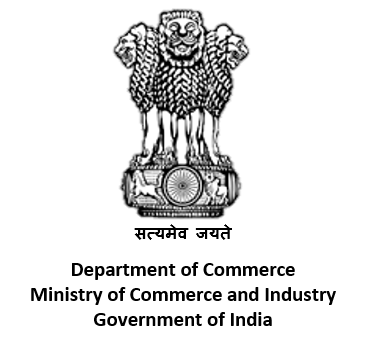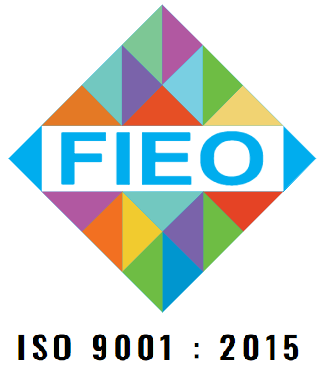Apparel and Garment Industry and Export
INTRODUCTION
India is among the top garment manufacturing countries in the world. Indian textiles and apparel products have a history of fine craftsmanship across the entire value chain from fiber, yarn, fabric to apparel with high global appeal. India’s cotton, silk, and denim are highly popular in other countries, and Indian apparel too has found success across fashion centers around the world. India is one of the largest consumers and producers of cotton with the highest acreage of 12.35 million hectares which is 37% of the global area under cotton cultivation. The Indian textile and apparel industry is highly diversified with a wide range of segments ranging from products of traditional handloom, handicrafts, wool, and silk products to the organized textile industry in India.
India’s textile and apparel market size is expected to grow at a CAGR of 10% from 2019-20 to reach US$ 190 billion by 2025-26. The industry is one of the biggest contributors to the economy with a 5% contribution to the gross domestic product (GDP). It is also the second largest employer after agriculture, providing direct employment to 45 million people and 100 million people in the allied sector. Andhra Pradesh, Telangana, Haryana, Jharkhand and Gujarat are the top textile and clothing manufacturing states in India.
EXPORT TREND
India is the sixth largest exporter of textiles and apparel products in the world with a massive raw material and manufacturing base. During 2020-21, share of textile, apparel and handicrafts in India’s total exports was 11.4% while India’s share of the global trade in textiles and apparel stood at 4%. Despite unprecedented logistics issues, India registered highest ever exports at US$ 44.4 billion in textiles and apparel (T&A) including handicrafts in FY 2021-22, recording a growth of 41% and 26% over FY 2020-21 and FY 2019-20, respectively. In FY 2022-23 (until September 2022) exports of ready-made garments (RMG) stood at US$ 8,127.3 million showing a growth of 10.8% over FY 2021-22.
Based on product category, exports during 2021-22 saw highest yearly growth of 54% in cotton textiles followed by 51% growth in man-made textiles, 30% growth in ready-made garments (RMG) and 22% growth in handicrafts. Cotton textiles exports is a major contributor with 39% share of total exports of textiles and apparel industry while ready-made garments, man-made textiles and handicrafts contributed 36%, 14% and 5% of the total exports for the sector respectively. Exports of Cotton Yarn/Fabs./Madeups, Handloom products etc stood at US$ 767.50 million in September 2022 and accounts for 2.35% of the total exports of the month.
During the recent meeting of the Minister of Commerce and Industry, Consumer Affairs, Food and Public Distribution and Textiles, Mr. Piyush Goyal along with members of AEPC, the 2022-23 export target for readymade garments for all textiles has been indicated as US$ 17.6 billion. AEPC has accepted this target and will be striving to exceed this target.
TOP EXPORT DESTINATIONS
India’s textile and apparel products, including handlooms and handicrafts, are exported to more than 100 countries across the globe. India’s key export destinations for textiles and apparel products includes countries namely USA, UAE, the UK, Bangladesh, Germany, China, Spain, France, Italy, Netherlands, Saudi Arabia, etc. USA is the largest importer among all, importing about one fourth of the total exports from India.
During 2021-22, USA was the top export destination for textile and apparel industry, accounting for 27% share of overall exports which has grown from 24% share witnessed in 2019-20. Among the other key export countries, Bangladesh has grown its share of imports significantly from 6% to 12% over the same period. India and UAE have recently signed a Free Trade Agreement (FTA) and the country is also in the process of negotiating FTAs with EU, Australia, UK, Canada, Israel and other countries/ region which is likely to boost exports of Indian textile and apparels in future by providing competitive edge over other exporting countries. Furthermore, India’s consolidated foreign direct investment (FDI) policy circular 2020 provides 100% FDI in single brand product retail trading and up to 51% FDI in multi-brand retail trading, subject to certain conditions. This continues to attract leading international retailers for sourcing their garment and home textiles requirements from India and drives the interest from new export destinations.
GOVERNMENT INITIATIVES
As the textile industry is crucial for India’s growth, the government of India has implemented several schemes for the growth of production and ease of trade. The Amended Technology Upgradation Fund Scheme (ATUFS) and the Advance Authorization (AA) schemes are focused on strengthening and increasing the production of textile and apparel products in the country.
Over last few years, the Government of India has launched various other initiatives to promote textile and apparel industry such as production linked incentive (PLI) scheme for technical textiles, setting up of seven PM Mega Integrated Textile Region and Apparel (PM MITRA) parks in greenfield/brownfield sites and implementing Textile Cluster Development Scheme (TCDS) from 2021-22 to 2025-26. The government has also approved continuation of Scheme for Rebate of State and Central Taxes and Levies on Export of Garments and Made-ups (RoSCTL scheme) up to March 2024 to boost export competitiveness of Indian apparel and made-ups. The Government will continue the RoSCTL scheme until it gets is merged with Remission of Duties and Taxes on Exported Products (RoDTEP) Scheme. For this purpose, the Government has made ad hoc allocation of funds of Rs. 73.98 billion for FY 2020-21 for issuance of duty credit scrips under RoSCTL Scheme. Further, the government has removed anti-dumping duty (ADD) on purified terephthalic acid (PTA), viscose staple fibre (VSF) and acrylic to promote exports in man-made fibre (MMF) sector.
GOVERNMENT BODIES
Apparel Export Promotion Council (AEPC)
The APEC was formed in 1978 and is the official body of apparel exporters in India. The primary objective of the council is to promote, advance, increase and develop the export of all types of ready-made garments in India. AEPC supports the apparel industry by providing research and inputs on FTA, FTP and bilateral agreements.
RELATED SITES
Source: India Brand Equity Foundation
.gif)
.gif)







